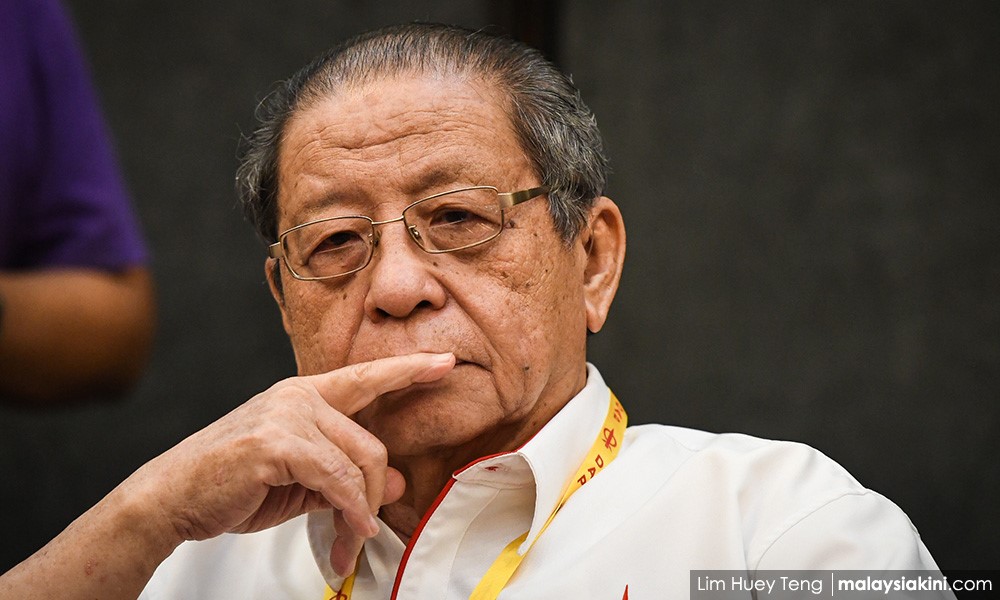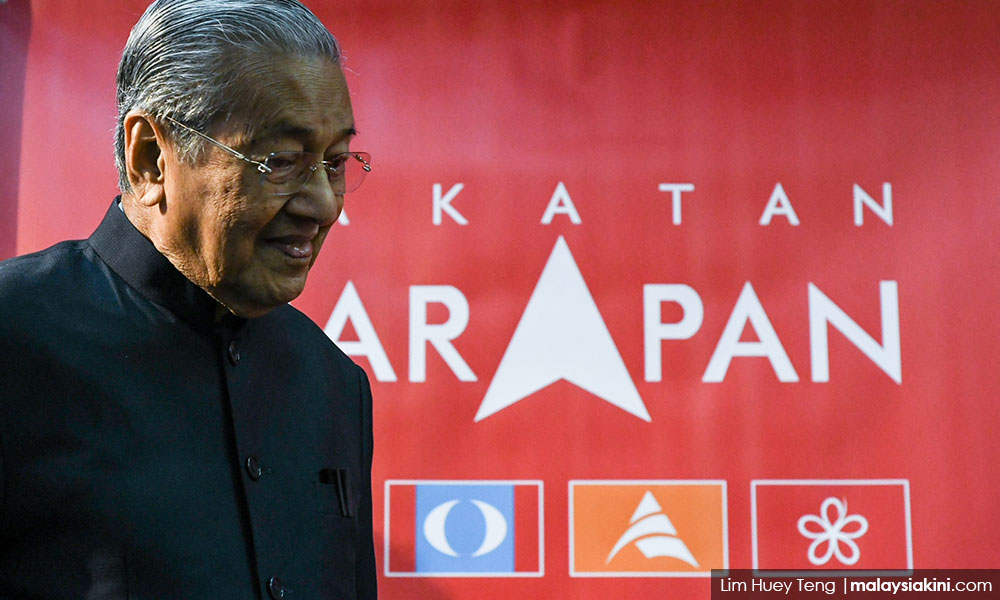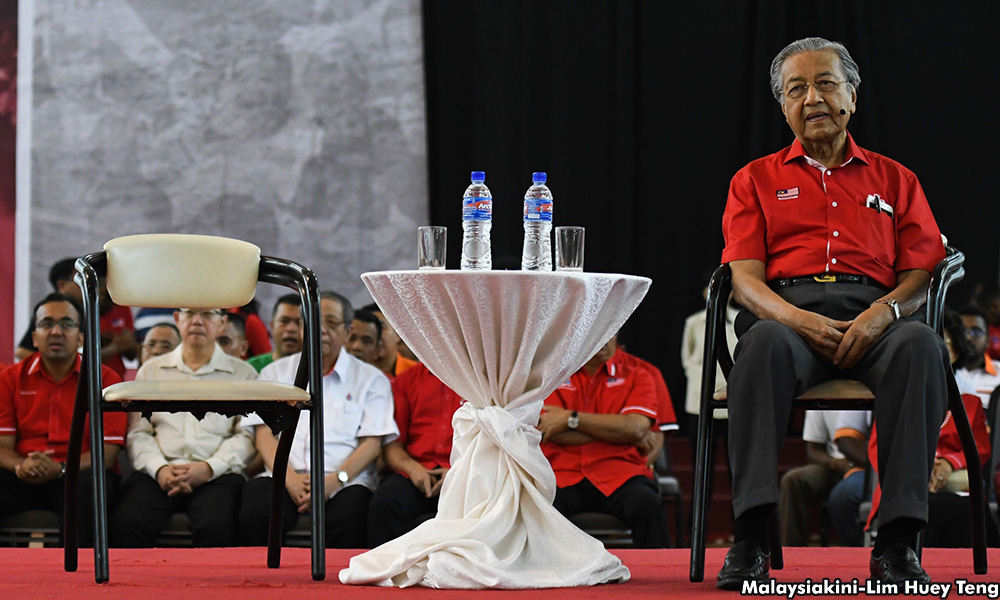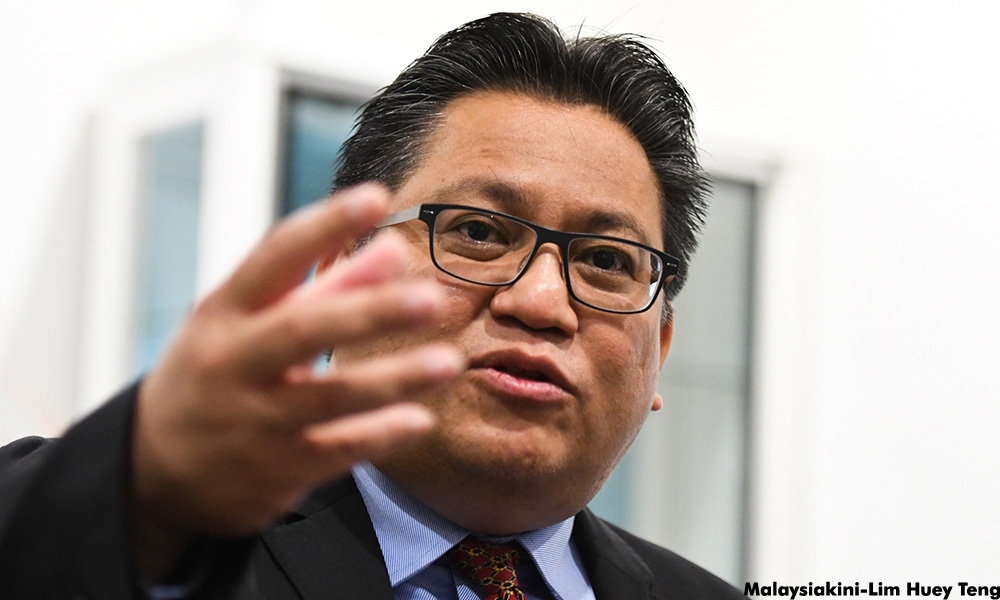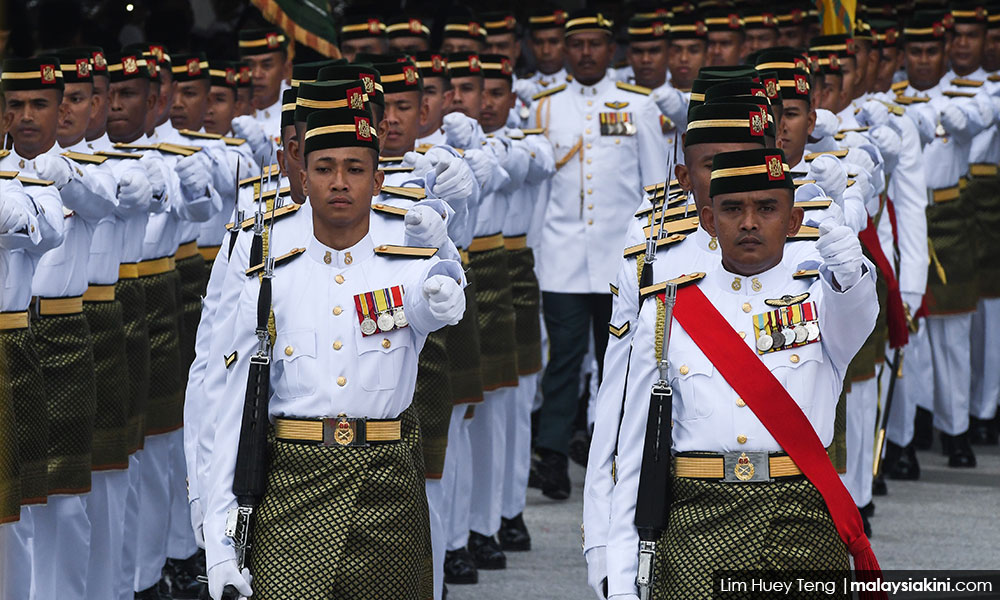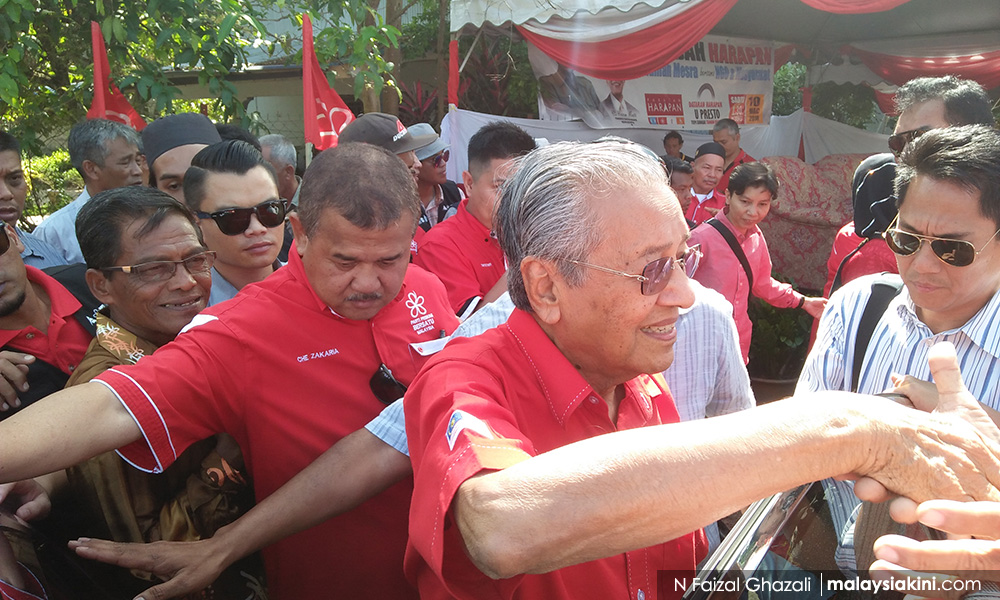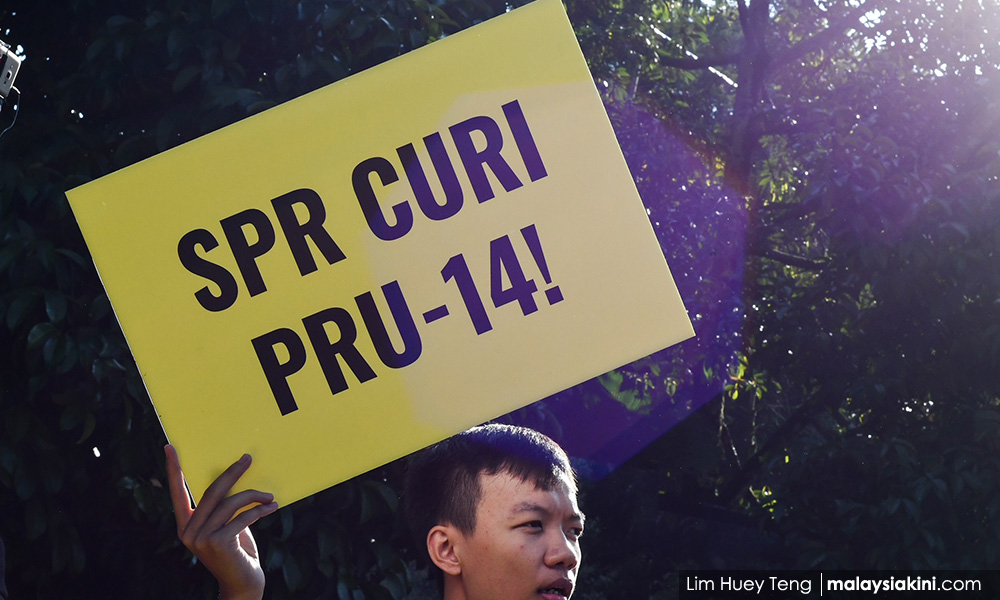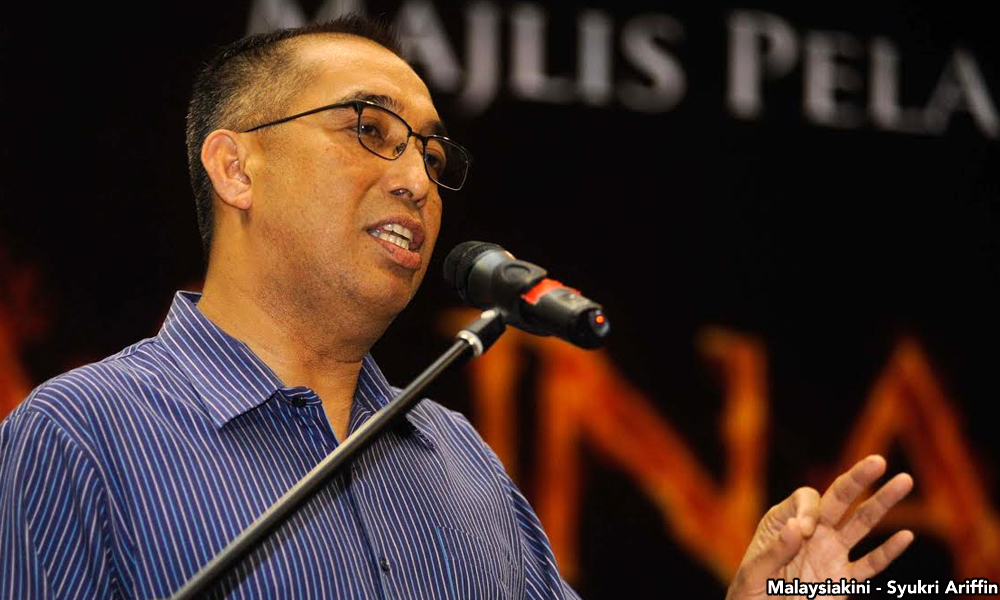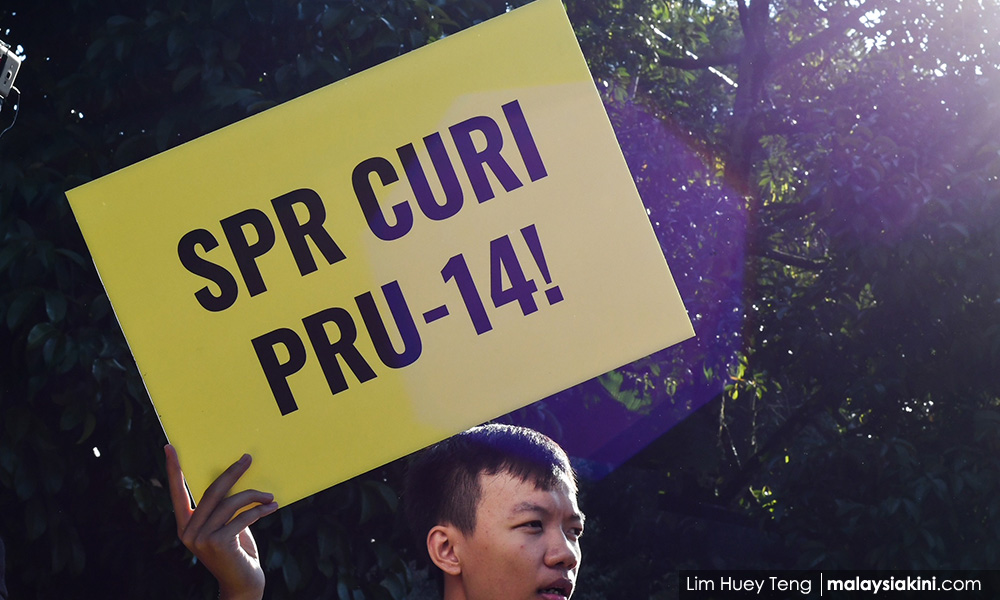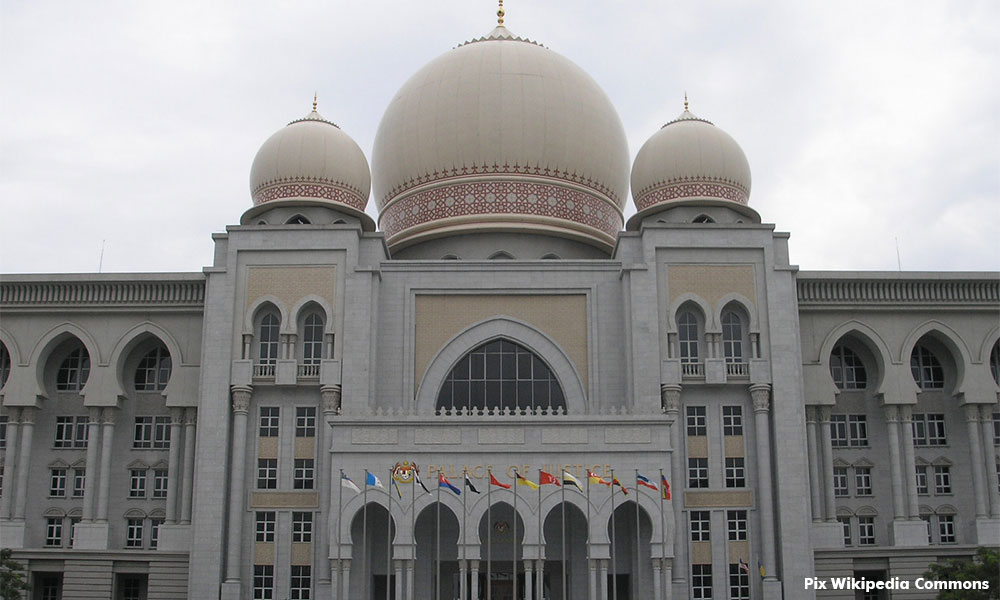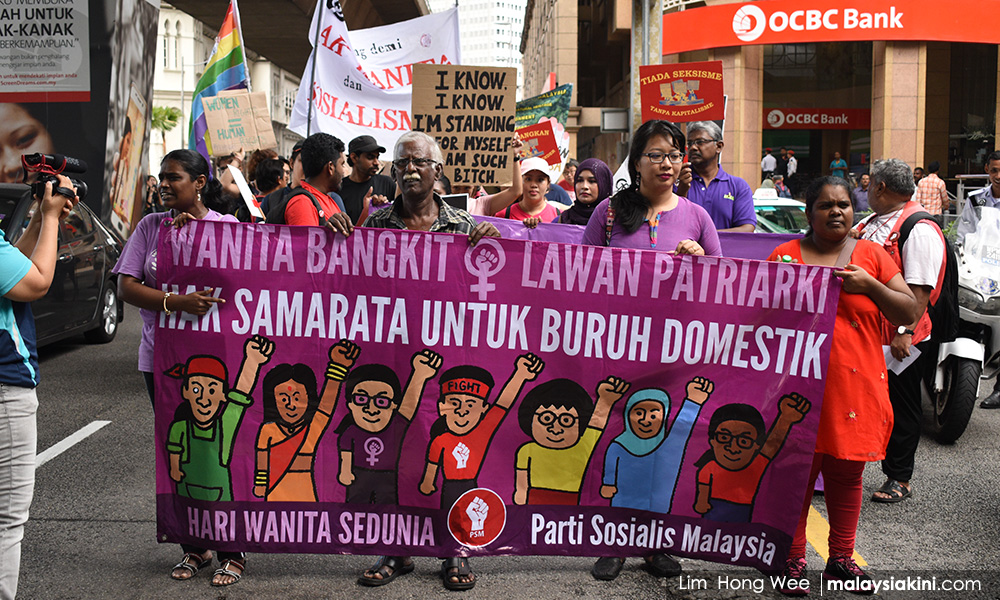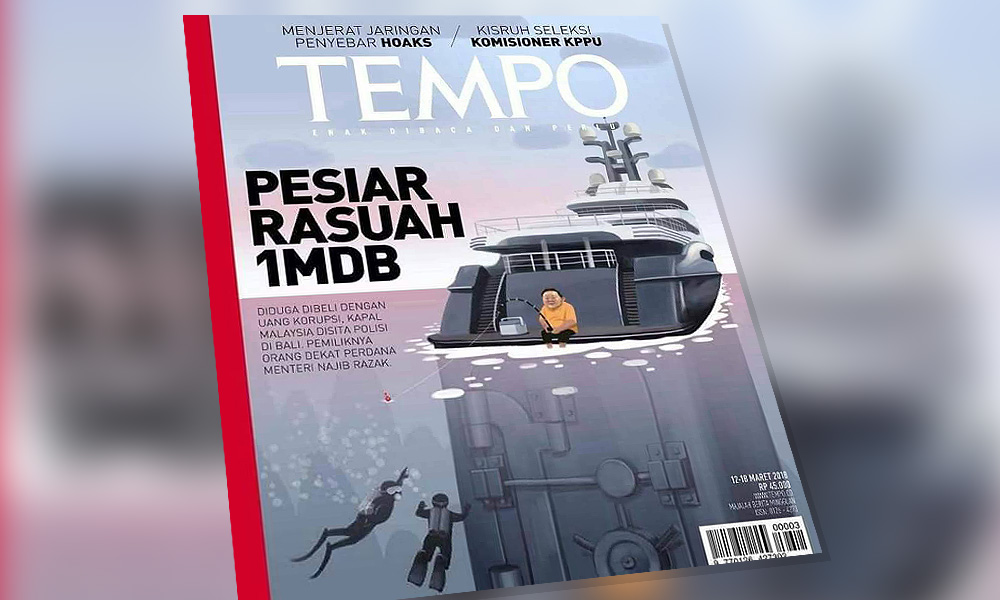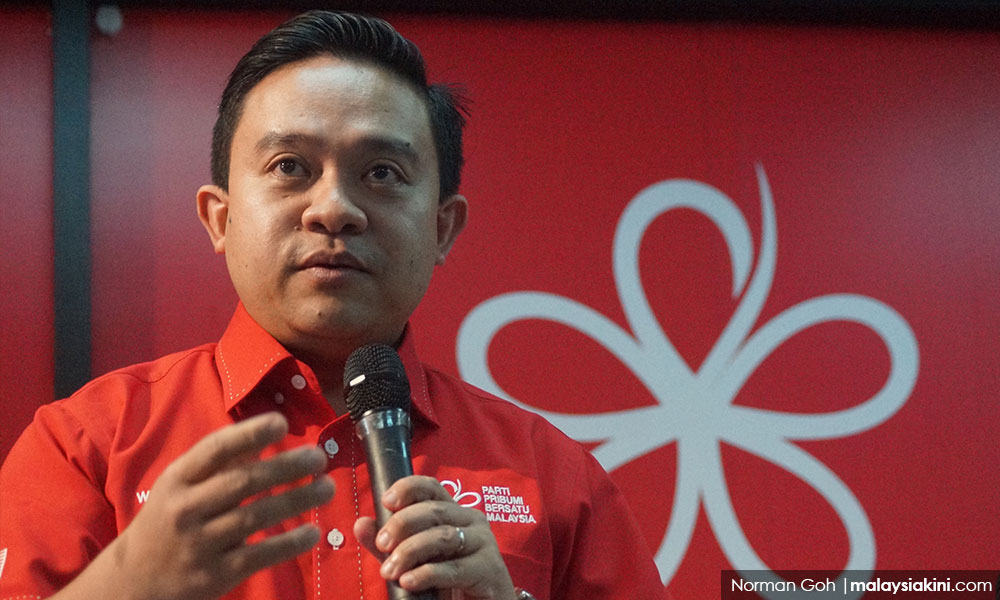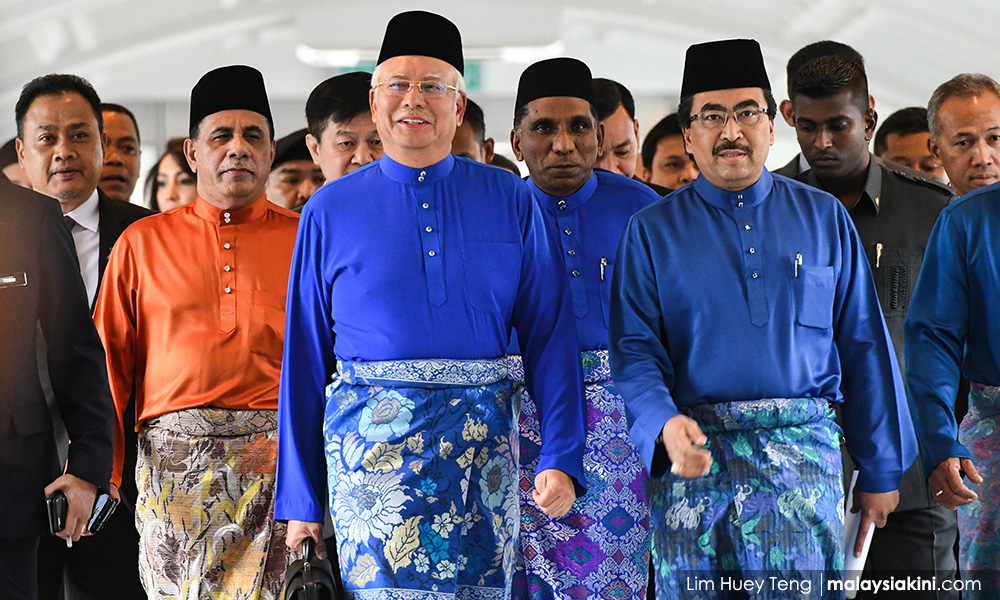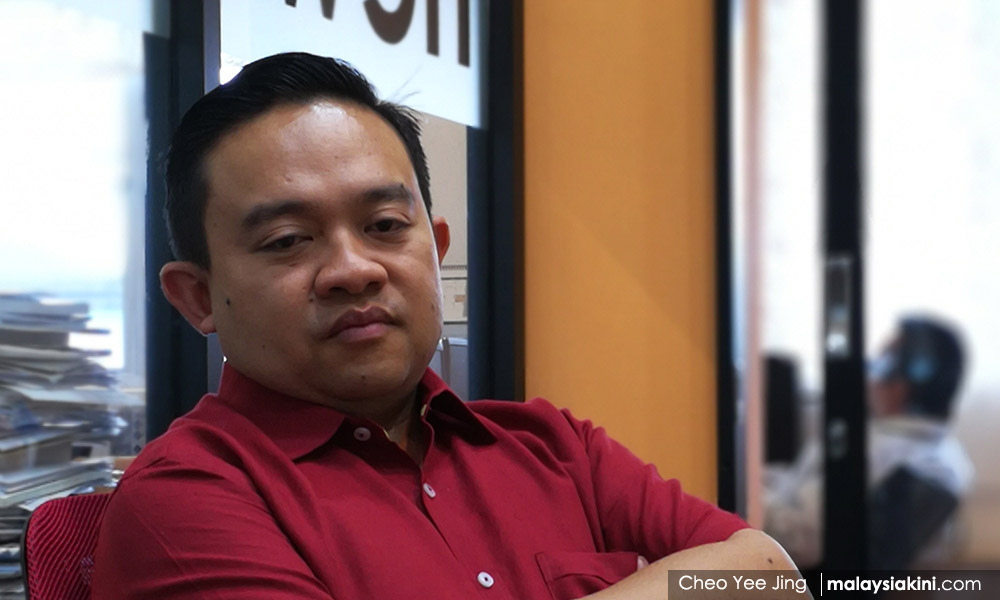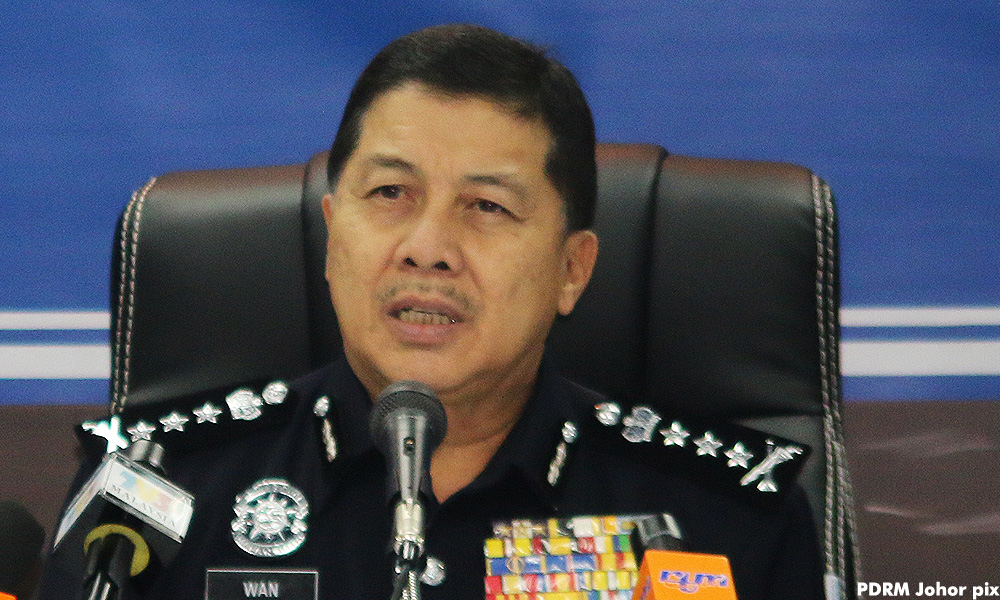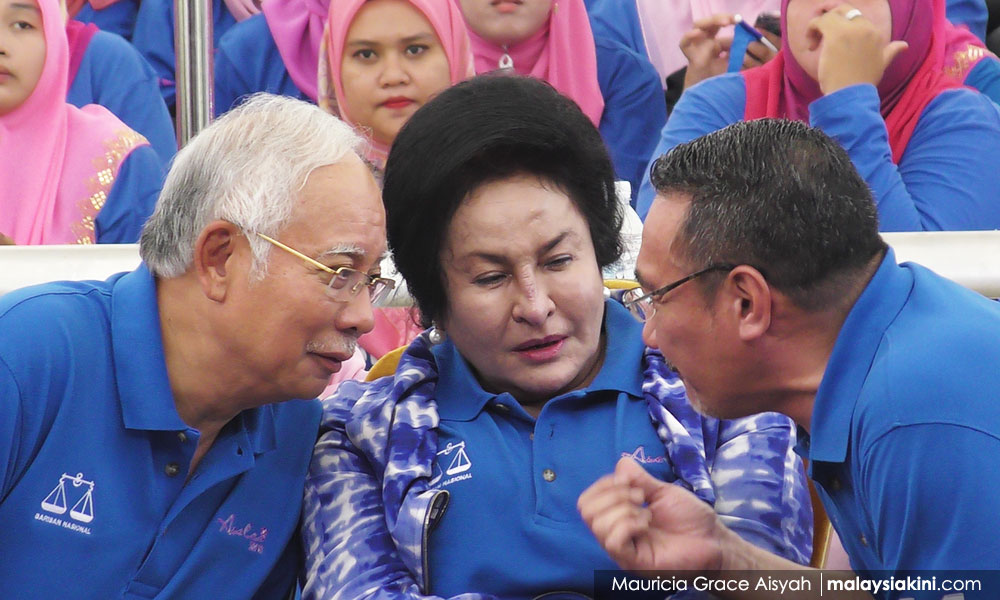[- Jiwi Kathaiah]
Some 54 years ago, the shouts of the Sanskrit word “MERDEKA” announced the birth of this Swarnabumi Malaya as an independent nation. Ever since, the schools teaching the languages of the two groups of people whose capital and labour transformed the tropical jungle Malaya into the modern Malaysia that it is today, have been sidelined by the UMNO government with the “ultimate objective” of wiping them out.
 The leaders of the Indian political party that has been and still is yoked to UMNO keep telling their Indian supporters day in day out that their government spends millions and millions on Tamil schools. Yet, these very leaders beg for pinchlion (a new word for infinitesimally small amount) from the Indians to keep the Tamil schools going. They also ask temples and their youth wings to adopt the Tamil schools as if the Tamil schools were orphans! Their grand slogan for their grand begging is “if not bucketful, give a pinch of it” (“அள்ளிக்கொடுக்காவிட்டாலும், கிள்ளிக் கொடுங்கள்”).
The leaders of the Indian political party that has been and still is yoked to UMNO keep telling their Indian supporters day in day out that their government spends millions and millions on Tamil schools. Yet, these very leaders beg for pinchlion (a new word for infinitesimally small amount) from the Indians to keep the Tamil schools going. They also ask temples and their youth wings to adopt the Tamil schools as if the Tamil schools were orphans! Their grand slogan for their grand begging is “if not bucketful, give a pinch of it” (“அள்ளிக்கொடுக்காவிட்டாலும், கிள்ளிக் கொடுங்கள்”).
In this hopeless situation for the country’s 523 Tamil schools, there appears in the murky sky of Malaysian politics a new star, Pakatan, promising hope for the Tamils schools.
Constitution prohibits discrimination
“Educating a child is the responsibility of the village” is an old saying from Africa. In modern term, it embodies the fundamental right of a child to education and the bounden duty of a state to educate the child. It is a universally accepted responsibility of a state. Malaysia has accepted it and provided for it in its Constitution.
In recognition of the plurality of the Malaysian society the Malaysian Constitution prohibits any discrimination in providing education to its citizens. In Article 12 (1) of the Constitution it is provided that there shall be no discrimination against any citizen on the grounds only of religion, race, descent or place of birth…in providing out of funds of a public authority financial aid for the maintenance or education of pupils or students in any educational institution (whether or not maintained by public authority…)
In addition to the prohibition of discrimination in providing out of public funds financial aid to schools, it is a requirement of the law that the education provided must be acceptable to the people. The national education policy provides for a system of education that is acceptable to all the people of this country. Section 3 of the Education Ordinance 1957 states that the policy “is to establish a national system of education acceptable to the people as a whole which will satisfy their needs and promote their cultural, social, economic and political development as a nation…whilst preserving and sustaining the growth of the language and culture of the peoples other than Malays living the country.”
UMNO’s “ultimate objective”
But, before some of us get carried away by this grand expression of lofty ideals as set out in the Education Ordinance 1957, it is very important to remind ourselves that the original draft of the Bill provided for only one language school as recommended by the Barnes Committee. The report also stated that “If any parents were not happy about this, their unhappiness would properly be taken as an indication that they did not so regard Malaya (as their permanent home)”. You can see the seeds of Pekida and Perkasa in it.
There was a storm of protest against that draft Bill. The people, in particular the Chinese, made their objection to the Bill abundantly clear to the then Education Minister Abdul Razak. He backed out and changed the text of the Bill to what is provided for in section 3 of the Education Ordinance 1957, quoted above.
Take note: the text of the original draft Bill was changed. But the spirit of it still lives on to this day in the “ultimate objective” of UMNO. That objective calls for the removal of vernacular schools and the retention of only the national school with the national language as the only medium of instruction.
The “ultimate objective” is not just a story of the past. It is a policy that has been vigorously pursued by the UMNO leadership up to the present moment. The latest confirmation of it came from the Minister of Education, Muhyiddin Yasin, in April, 2009. The 1Malaysia Prime Minister Najib Razak did not censure him. Nor did he say it is no longer the policy of UMNO. Instead, he backed Muhyiddin Yasin, but with a qualification, in view of the political cost of saying yes outright, that it would be implemented only when all the people accepted it. So, UMNO’s “ultimate objective” is there, waiting for our support for it and with our support UMNO will wipe out the Chinese and Tamil schools!
UMNO would have finished off the vernacular schools in the 1950s itself had it not been for the political cost of doing so. What they could not do outright by legislation then had been pursued through fiscal policy, tightening the screw on financial allocations. S. Arasaratnam, Professor of History at the University of Malaya, wrote in 1970 “… Chinese and Tamil (schools) were not accepted as part of the national system. The Chinese and Tamil medium schools were left alone, decisively out of the national system… (They) were permitted to continue because of the political hazards of abolishing them”.
So, the Chinese and Tamil schools that we see around in the country are there not in fulfilment of the requirements of Article 12 of the Constitution and of Section 3 of the Education Ordinance 1957. They are there to facilitate a political requirement: the votes of the Chinese and the Indians for UMNO.
Unlike the Chinese and the Indian political leaders of all shades, the UMNO has been steadfast in its commitment to wipe out the vernacular schools off the face of Malaysia. It is the political reality that makes it to play for the opportune moment. In the meantime, they tighten the screw on the flow of funds to these schools.
In October, 2O00, one Education Minister, Musa Muhammad, had declared that vernacular education was the responsibility of the communities concerned.
On March 6, 2008, just two days before the general election, the then Deputy Prime Minister Najib Razak met MIC representatives in Kuala Lumpur and assured them that there would be no discrimination between the National schools and the Tamil schools. A year later, he backed his Deputy Muhyddin Yasin’s open support for “ultimate objective”. The wiliest of all was the other Education Minister Hishammuddin Hussein who on March 7, 2007 went to the office of the Sin Chew Daily and announced that “the ‘ultimate objective’ – as stated in the Abdul Razak Education Report 1956 – of converting all vernacular schools into national schools and using the national language as the main medium of instruction is obsolete.” He asked the Chinese community to give him time to prove his sincerity and promised them, “I will walk the talk”. Yes. He walked, and walked to talk to the guys who brought the cow head to the Selangor state secretariat.
Now, under the guise of promoting world-class thinking, Muhyiddin Yasin wants to revamp the present education policy which he said was based on the 1956 Razak Report. He pointed out that “some people are not aware of where our education system is heading, as we have the national system, the vernacular schools and international schools.” Surely, we can guess where Muhyiddin is heading.
Open discrimination
Without going into the astronomical figures that the leaders of UMNO government and its Indian and Chinese partners dish out year after year to prove their claim of government spending on the vernacular schools under the operating expenditures for education, we will compare the allocations made by the government for the development of the national and the vernacular schools under the Malaysia Plans from the 6 to 9:
|
To know what the allocations mean in dollar and cents per month per student, let us now look at the allocations provided under the 9th Malaysia Plan:
| All primary schools | National primary schools | % of total | Chinese primary schools | % of total | Tamil primary schools | % of total | |
| Total no. students | 3,044,977 | 2,300,729 | 75.6 | 645,669 | 21.2 | 98,579 | 3.2 |
| 9MP Development-Million | 4,837.3 | 4,598.2 | 95.1 | 174.33 | 6 | 64.8 | 1.3 |
| RM per student for 5 years | 1,589 | 1,998 | 270 | 659 | |||
| RM per student per month | 26.48 | 33.30 | 4.50 | 10.95 |
Now, look at the discrimination in providing public funds to the Chinese and Tamil schools. Based on the student population and at RM26.48 per student per month the Chinese schools with 21.2 % of students should get RM1025.5 million; the Tamil schools with 3.2 % should get 154.8 million. The Chinese and the Indian students, the citizens of this country, were deprived of RM851.17 million and RM90.0 million respectively.
As for the 10th Malaysia Plan, Najib Razak, while presenting his 10th Malaysia Plan proposals in Parliament on 10 June 2010, said that “for purposes of renovating and upgrading government-aided schools, a sum of RM280 million will be allocated for 2011-2012.” Each category of government aided school – Chinese, Tamil, Religious and Mission schools will each get RM70 million. How much is allocated to the National schools is not made known.
To obtain correct information on the exact allocations provided for in the 10th Malaysia Plan, the MP for Ipoh Barart M. Kulasegaran submitted the following question to the Minister on 17.10.2011:
“YB Tuan Kulassegaran A/l Murugesan (Ipoh Barat) minta MENTERI PELAJARAN menyatakan amaun wang yang dijangka dan telah dibelanjakan untuk setiap murid setiap bulan untuk sekolah Kebangsaan Cina dan Tamil di bawah rancangan Malaysia ke-9 dan ke-10. Sila nyatakan rasional perbezaan perplanjaan ini.”
This is the answer received by Kulasegaran in the last week of December, 2011:
| Kategori Sekolah | RMKe – 9 (RM) | RMKe – 10 (RM) |
| SJK ( C ) | 6,457,080,807 | 1,716,393,676 |
| SJK ( T ) | 2,481,674,380 | 584,382,340 |
The reply as above does not answer the question how much per student, per month. It is also wrong and misleading. Under the 9h Malaysia Plan Chinese and Tamil Schools received only RM174.33 million and RM64.8 Million respectively.
If the 9th Malaysia Plan allocation is any indicator of the level of discrimination practised in allocating public funds to the different streams of schools, one can imagine the level of discrimination that is bound to be in the allocations for the 10th Malaysia Plan. That must be the reason for giving Kulasegaran the incongruous and incomplete answer.
Further, the budget 2012 allocation of RM100 million for 523 Tamil schools, which averages out to RM191.204.59 per school, is certainly not enough to meet the needs of the Tamil schools, but for UMNO it is more than enough to meet its political obligation for getting the Indian votes!
Container class rooms: Barisan will not accept
Of course, political party leaders, in particular Indian political party leaders, are already blaring about the millions allocated and promised for the Tamil schools. At the same time, the Tamil newspapers give graphic accounts on a daily basis of the awful conditions obtained in the Tamil schools throughout the country.
One of the latest reports, January 6, 2012, says that the MP for Ulu Selangor P.Kamalanathan had told his audience at Bukit Beruntong that it is not an easy matter to obtain full allocations for schools that are not fully-aided government schools. He then presented cheques to nine Tamil schools in that area amounting to RM63,000 to carry out development projects in the schools concerned.
One of the schools that received RM5,000 from him for its development project was Batang Kali Tamil School. It is a fully-aided government school. In its standard three class room there are 50 students and in the standard six class, 55 students. They could hardly move about freely. If putting up a new building in a fully aided government school is such a problem, what could be said about the partly-aided schools, some parents lamented.
There were earlier reports that because of shortage of space in that school, new students would have to be accommodated in the old container that has been lying in the School compound. Having heard of this, Selangor State Exco Member Xavier Jayakumar offered to arrange for a new container for RM20,000.
Oh, no! In this modern era, students learning in container, Barisan government will not accept it, V.Mukilan, Ulu Selangor MIC Youth Chairman and MIC Deputy Youth Chairman, told the press. He was not sure whether this School is included in the RM100 million allocation announced by the government. Parents-Teachers Association Chairman Om Apparao said that an application for an additional building was submitted to the Ministry of Education. But there is no reply from anyone. The President and the Deputy President of the MIC had also been informed.
Since this is a fully aided government school, there should be no problem in putting up a new building, Mukilan said. He would collect all the relevant documents and bring them to the attention of the Minister of Education. (Tamil Nesan, Janauary 6, 2012)
No man born of a woman
The latest information is that Xavier Jayakumar had as promised already delivered the container to Batang Kali Tamil School on January 6.
No man born of a woman, unless he is blind, deaf, dumb and a vegetable, will deny the blatant discrimination in providing public funds to the vernacular schools practised openly by the government which is duty bound to honour Article 12 of the Federal Constitution and the relevant Education Acts.
Tamil schools are, like the Chinese schools, marginalised. Deputy Minister of Education Wee Kah Siong could claim as he did that “the Chinese schools are not marginalised”. If he is right, he must then explain why a Chinese school student is given RM4.50 as against the RM33.30 given to a National school student. Apparently, MIC President G.Palanivel was more honourable when he publicly declared that “the Indian community is marginalised and I have no doubt about it” and goes about begging for pinchlion from his marginalised community.
No matter what happens to the vernacular schools, it must be borne in mind that no leader of MIC or MCA could or would dare tell their master UMNO to dismantle its “ultimate objective” of wiping out the vernacular schools and stop discrimination in providing public funds to schools in violation of Article 12 of the Constitution.
What about new deals?
That being the case, what is the solution for full government funding for the Tamil schools, or the vernacular schools as a whole?
The emergence of the new political era following the 2008 General Election and the drive of the new political force Pakatan to capture the central government in the coming election, for which they need every available vote, in particular the Indian vote, must provide an opportunity for a deal. Politics is all about deals!
There are Pakatan leaders, not all of them, of course, who have taken serious note of the problems faced by the Tamil schools and have in fact instituted serious measures of all sorts to bring about better environment in the Tamil schools for the healthy development of the students’ intellectual propensity.
The best in 200 years
The Pakatan’s State Governments of Penang and Selangor have during the last three years that they have been in control of the States shown interests in addressing the various problems faced by the Tamil schools in these States, which have remained neglected under the previous Barisan State Governments for fifty over years!
The State governments are not at liberty to do what they like in matters concerning education as it is a Federal matter. It is only in respect of land they have a say. Land they may give. But it does not mean the Ministry of Education is obliged to construct a school building on it. For example: more than two years ago the Selangor State government allocated 2.7 acres of land to Simpang Lima II Tamil School, in Sentosa, Klang. No response from the Ministry of Education to this very day.
Even private organisation’s offer of land also meets with the same fate. The National Land Finance Cooperative Ltd (NLFC) had more than three years ago offered 8 acres of its land in Seremban to the Ministry of Education and invited it to build a Tamil school on it. Having waited in vain for a response from the Ministry, NLFC decided to put up its own building for the school and it is nearing completion.
It is plain for all to see that the Ministry of Education does not want to encourage the development of Tamil schools from any source. This is the type of constraints that the two Pakatan State Governments are confronted with in their efforts to change the face of the Tamil schools in their States.
However, the Penang State government swiftly moved into action in May 2008. Deputy Chief Minister P.Ramasamy set up a Special Committee on Tamil Schools under the Chairmanship of Dr.K.Anbalakan. Since 2009, the State government has been granting financial assistance to the Tamil schools in the State, which to date amounts to RM5,000,000.
This allocation “is used for constructing additional new classrooms, repairing and upgrading existing structures like classrooms, canteens, toilets, roof, playing field, buying chairs, desks, soft boards and other items needed for learning and teaching and academic enrichment programmes.”
In a land scarce State, it costs a lot to acquire private land for the schools. Nevertheless, the State acquired land for the Schools as listed below:
2008: SJKT Ladang Batu Kawan, Seberang Perai Selatan: 2 acres of land2009: SJKT Azad, Penang Island: 0.9 acres of prime land costing about RM10 million today. It was worth RM4.85 million in 2009. In December 2008, the State government made a decision to alienate this piece of land to the school.
2011: SJKT Ladang valdor, Seberang Perai Selatan: Two acres of land costing close to RM2 million has been acquired for the school from a private owner. The State is in the process of transferring the land to the school.
2011: SJKT Subramania Barathee, Penang Island: 2.3 acres of land costing close to RM10 million has been alienated to the school by the State government. The official handing over ceremony of the land will be carried out in a couple of weeks.
There are two schools, SJKT Ladang Sungai Bakap in Seberang Perai Selatan and SJKT Rajaji in Penang Island, which are in urgent need of land. The Penang State government has placed them in priority list and is looking for land. This is the report given by Dr. K. Anbalakan.
Equally aggressive in its pursuit to initiate a meaningful change to the dilapidated physical conditions of the Tamil schools in the State of Selangor and to provide opportunities to boost the morale of the psychologically downtrodden students of these schools, the Pakatan Selangor State government has gone to the extent of building a brand new Tamil school on a 4 acre land with a hall that can accommodate 1,500 to 2,000 people. Truly, this is something new to the Tamil school community in its almost 200 year history. It is something for the parents to cheer up. Yet, it is something for Selangor State government to worry about as the Federal government as the sole authority for building schools might strike back with vengeance.
To this possibility of the Federal government intervention, the moving spirit behind the Selangor government’s initiatives for Tamil schools in the State Dr. Xavier Jayakumar, has the best democratic answer: “Let the people be the Judge.”
Working in close cooperation with Tamil school teachers, Officers of the Parents-Teachers Associations, number of NGOs with good track records and other activists, the Selangor State government has between 2008 and 2011 spent over RM15 million on projects such building computer labs in 9 schools, adding infrastructures to 78 schools, allowances paid to PIBGs in 97 schools, special fees for poor students from 63 schools, financial assistance to various educational programmes, publications, two Kindergarten Rakyat and 10 kindergartens in Tamil schools. It includes the cost of building the RM3 million Midland Tamil School. This School is expected to be ready for use by next month.
However, the RM15 million does not include the value of the lands that have been allocated by the State as under:
1. Simpang Lima II, Sentoasa, Klang. 2. Midlands 4 acres. 3.Kula Kubu Baru 4.2 acres; 4. Desa Mentaria 1.5 acres. 5. Rawang 1.153 acres. 6.Alam Impian Batu Ampat 4 acres. 7. Bukit Raja 2.4 acres. 8. Coal Field 4 acres. 9. Semenyih 3.12 acres and 10. Bukit Beruntong 4 acres.
The one standing excuse the Federal government always has for not building new Tamil schools in the various States is the inability of the States to provide land. The Selangor State government has since 2008 given all the lands mentioned above. To date, there is no action whatsoever on the part of the Federal government to put up buildings on these lands.
In addition, there are three more lands already allocated for building new Tamil schools by the previous Barisan Selagnor State government: 1.Taman Kanagapuram (PJS1, Petaling Jaya) 4acres, allocated in 1974. 2. Seaport, Kelana Jaya 5 acres; now left with only 1.5 acres, and 3. Seafield, Subang 5 acres. From this 0.7 acre has been acquired for LRT project.
Time to judge
For 2012, the Selangor State government is engaged in building an 18 class room Coalfield Tamil School in Ijok with a hall that can accommodate 500 people on a 4 acre land, costing RM3 million.
Further, the Selangor State government appears to be having its own positive “ultimate objective” which is unlike the negative “ultimate objective” of UNMO. It plans to spend a minimum of RM4 million a year for the developments of Tamil schools in the State and is also determined to build at least one Tamil school every year.
We have a Federal government which is responsible for building and maintaining vernacular schools and providing without any discrimination funding from public authority to all these schools, practising outright discrimination in violation of the Federal Constitution. The Federal government has so far been doing it in pursuit of its ulterior “ultimate objective” of wiping out the vernacular schools as originally formulated in the 1950s with total impunity.
The denial of equal funding for the vernacular schools has done tremendous injustice to the students of these schools who are as citizens of the country are entitled to equal treatment as the students in the national school.
On the other hand, the two Pakatan State governments have on their own initiative moved to do for these schools more than what they are legally required to do. Their obligation as far as schools are concerned is only to provide land when the Federal government ask for it to build a school. They are in fact doing what the Federal government is obliged to do. They are doing it, for sure, not as a charity. They are doing it as their duty to the citizens of the country.
Now, it is for the people to judge which government, the Barisan or the Pakatan, promotes and protects as far as is known the rights of the vernacular schools as enshrined in the Federal Constitution.
Source: Thisaigal, Dec 2011 – March 2012


